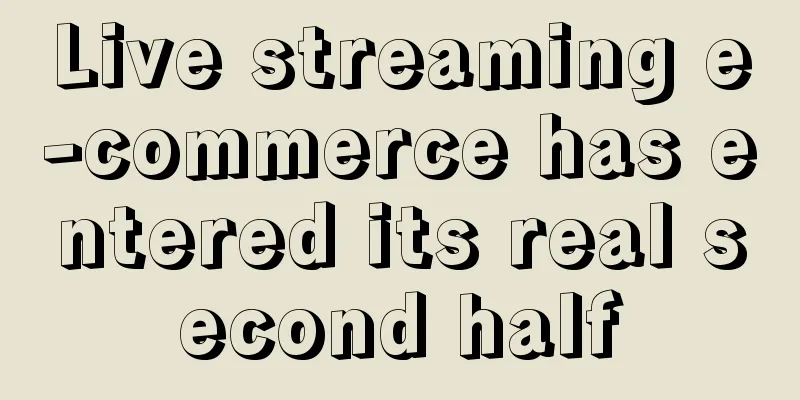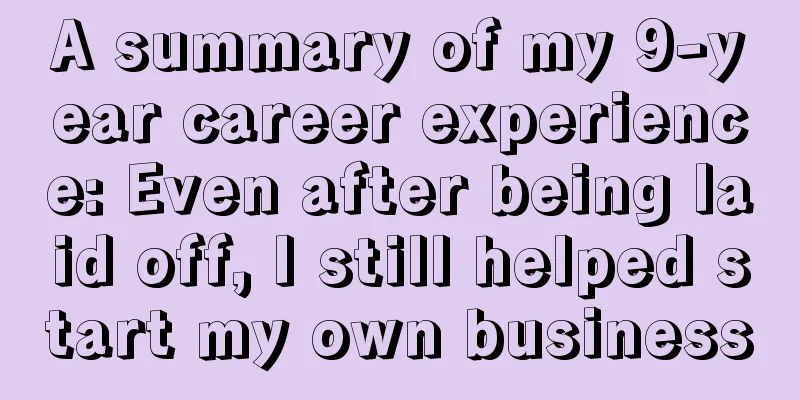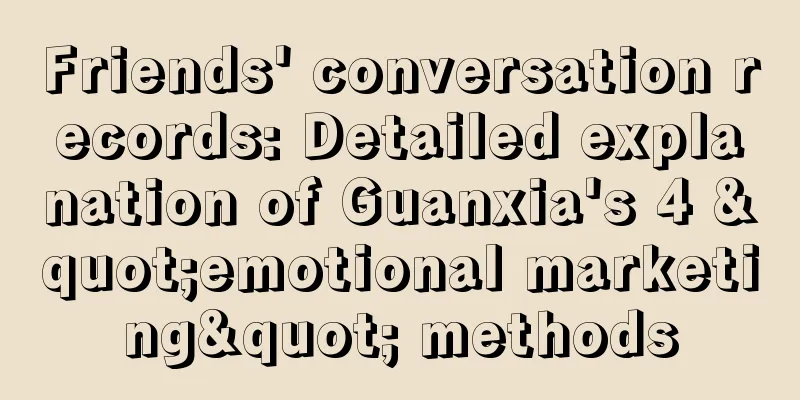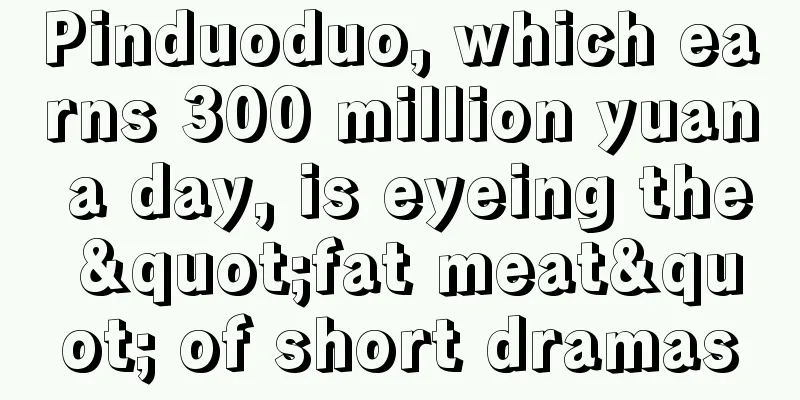These 24 brand viewpoints will teach you how to build a brand from scratch
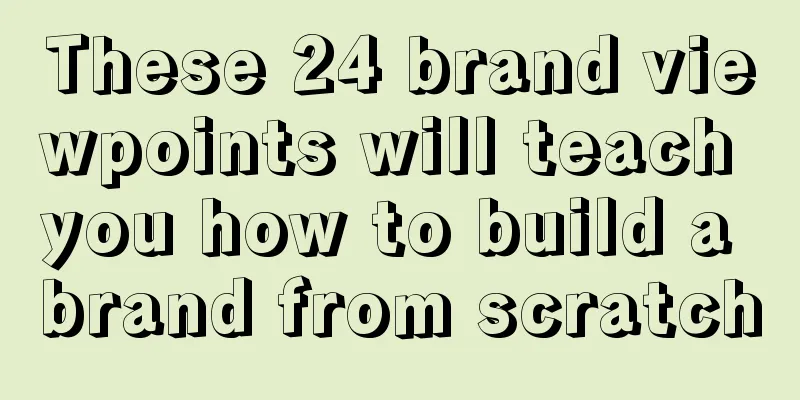
1. Where does business come from?The fact that all living beings suffer is actually the entry point to business. Your birth can be solved by the confinement center; your aging can be solved by health care products; Your illness can be cured by expensive medicines; your death can be cured by selling cemeteries; And if you have any grudges or hatreds, you can use the sandbags to deal with them. You can vent them with a few punches and feel good. Your love is separated, there are high-speed rail to solve the migration problem, social software to solve the communication problem, and food delivery software to solve the flower delivery problem; There are online games or inspirational stories to solve your unfulfilled desires. Finally, if your five aggregates are blazing, you can still solve it through meditation, contemplation, and knowledge payment; The suffering of these sentient beings, from another perspective, is also a business entry point. 2. Find business direction from human natureWhat is the underlying logic of human nature? 1. Love the new and dislike the oldNew clothes, new shoes, new restaurants, new wives, as long as it is new, you want to see it, look at it, and try it out, because you like the new and dislike the old, so there is a constant flow of consumption. Deep down is the need and desire in human nature that can never be satisfied. 2. Love of leisure and dislike of workWhy did we invent the remote control? Why did we have proxy services? Why did we have errand-running platforms? Because people are born to enjoy things. If you are used to taking a taxi to work, you will not want to take the subway anymore. If you are used to a luxurious life, it will be difficult for you to downgrade your consumption. It's easier to go up the mountain than to go down, and you prefer leisure to work. 3. Seek benefits and avoid harmWhen they see benefits, they rush to grab cabbages, eggs, and discount tickets. When they see harm, they avoid it and hide away, fearing that they will suffer any harm. This is actually loss aversion. Because of these three kinds of human psychology, the following three consumption trends are inevitable: 1. Products will inevitably be upgraded and replaced. Electric cars will replace fuel cars, and mobile phones will replace mobile phones. People will always be tired of the old and love the new, and desire new things. Second, every industry will become a service industry. In order to save trouble and time, all fields will have professional services to carry out refined operations and management. They will make decisions for you. The underlying logic is that people are too lazy to compare prices and too lazy to use their brains. This is called love of leisure and hate of work. The third trend is that all industries will be financialized and insured. Enterprises will be financialized, entities will be financialized, and risk products will be preserved. Everything can be financed, everything can be insured, and even people’s emotions can be financialized and insured. For example, if you are in a relationship, you will have a breakup insurance to ensure that you can claim compensation after the breakup. The logic behind this is that human nature seeks profit and avoids harm, maximizing benefits and minimizing losses. This is my view on human nature. Only by knowing these secrets of human nature can you find ways to start a business and build a brand in the future - prescribing the right medicine for the right disease. 3. Who am I? Where do I come from? Where am I going?There are three ultimate questions in this world: Who am I? Where do I come from? Where am I going? Enterprises also face these three problems: First, where do I come from? The establishment of an enterprise is to solve social problems and become an organ of society. Therefore, the direction of the enterprise comes from the fact that all living beings suffer and solve the problems of the masses. The second question is where am I going? Enterprises need to know where they are leading everyone. What is the direction and path to help the public solve their pain? Xiaomi said it would change China's manufacturing industry; Tesla said it would lead humans to colonize Mars; McDonald's said it would become a leader in the fast food industry. Finding a clear direction means finding your ideal. Finally, it becomes simple to say who I am - it’s just that I want to solve the problem and where I will take everyone in the end. I am a certain consulting company. I help companies avoid detours and bring Chinese brands to the world. I am a certain milk powder company. I solve food safety issues and improve the nutrition and health of the Chinese people. I am a certain pharmaceutical company. I eliminate all cancers and extend the lifespan of all mankind, and so on. This is the method to find the business direction of the enterprise and also the method to establish the core value of the brand. 4. The ideal of an enterprise is to make a great wishCommunism is an ideal. Immigrating to Mars is an ideal. Noah's Ark is an ideal. What is out of reach is an ideal, and what is within reach is a plan. Enterprises should establish an unattainable ideal, which represents the future development of the entire industry, the ultimate dream of all mankind, and the common proposition of the world. Look, Huawei's ideal is to connect everything and create a smart world; Alibaba's ideal is to make business easy; even Weilong Spicy Tiao has a super ideal: to make everyone in the world fall in love with Chinese flavor. The ideal of an enterprise is to make a great wish. Only by making a great wish can you gain wisdom, slay evil spirits, and strengthen your magic. In the end, if there is divine help, you can dare to change the sun and the moon into a new sky. 5. Three steps of corporate strategyThe journey to the West to seek Buddhist scriptures is an ideal, and the 81 trials are the path; the great rejuvenation is an ideal, and the five-year plan is the path; the small goal of 100 million is an ideal, and the explosive product-model-platform is the path. It is not enough for a company to have lofty goals and ideals, but also to have a clear path to promotion and development plan, which requires corporate strategy. Strategy is like playing Go, the golden horn, the silver edge and the grass belly. The golden horn occupies the commanding heights, and the silver edge draws out the encirclement. The sickle harvests the grass belly, and the world is united to achieve the overall situation. What does it mean? To put it simply, it is the logic of point-line-plane. The golden corner refers to the hit product. The company must first use the hit product to build its reputation and become a star brand. The silver edge refers to the depth of the category, becoming a leader in the category and owning a category product line. Finally, the sickle harvests the belly of the grass. Once the brand is established, the brand will continue to extend its product categories, eat the brand's dividends, and reap the brand's marginal effect. This is the trilogy of corporate strategy and the best path for companies to achieve their ideals. 6. Entrepreneurship is like crossing the line of fireMoses had to leave Egypt to be a leader. Hollywood superheroes also have to walk the path of redemption in order for the plot to move people. To build a brand, you have to climb up step by step, just like climbing a mountain. In this process, you have to overcome at least three pitfalls: The first pitfall was from 0 to 1, when people didn’t trust us. Consumers didn’t trust us, dealers didn’t trust us, and the media and the public didn’t trust us. How do you impress others at this time? You can only dare to be the first and shout a loud slogan. Song Jiang's slogan is to act on behalf of heaven, and Sun Yat-sen's slogan is to drive out the Tartars, restore China, and equalize land rights. Become an industry opinion leader, network a group of fans, and lead others. The first pit is to become famous and gather popularity with fame. The second pitfall is the partial failure of word of mouth. Because the brand is just starting out and in an unstable period, many newcomers will come in and use other people's strengths to attack your weaknesses, and negative public opinion will appear on the Internet. This pitfall is that people are afraid of becoming famous, just like pigs are afraid of getting fat. Products will always receive negative reviews, which is a mutual screening process between fans and brands. After passing the negative criticism stage, your fans are loyal fans. The third pitfall is the abuse from the public and the media. If you want to become a super brand, you will face at least one public relations crisis, whether it is a product omission, a service problem, or a negative reputation of the founder, you will always encounter an overwhelming public and media condemnation. At this time, we must be positive and optimistic, solve problems instead of blaming others. Only by withstanding the war of words can we become a truly invincible brand. There is no shortcut in this process. This is a heroic journey that brands must take. Only by going through the cusp of the storm can we truly hone the value of the brand. Brand building is crossing the line of fire, not walking in no man's land. 7. Products are the embodiment of conceptsMonks need wooden fish to meditate, and rich men need sports cars to flirt with girls. To go from place A to place B, you need to take a train or a plane. To realize a certain ideal, you must have a material entity as a medium. This medium is the product. The product is the embodiment of the ideal. The brand is just a symbol, and the product is the material entity of this symbol. The value of a product without a symbol will plummet, and without a product symbol, there is no point in it existing. That is why products are labeled with brand logos, in order to materialize the concept and allow it to be exchanged as a substance. The materialized concept will attract many people to consume, and what they buy is not only the product but also the concept. They are both consumers and fans. 8. Three different business mindsetsThe Yangtze River divides the two banks: the west is a village where the poor live; the east is a city where the rich live. How can people in the western village go to the eastern city? A Yangtze River Bridge is needed. Through this bridge, people in the western village can go to the eastern city and live a good life. So, the bridge was built. People in the west dream of going to the east, but the road to the bridge is tolled. Everyone needs to pay the toll to get a pass to go to the east. Later, a smart man said, why do we have to cross the bridge? We can also row across by boat, so he invented a boat. It also charges a fee, which is the boat ticket. However, some people think that this is not the ultimate solution to the problem, so he proposed an even crazier plan : land reclamation. He began to take out loans, raise funds, and build a team to slowly realize his plan. Everyone has his own way to cross the river: some people build bridges, some people build ships, and some people fill the sea. Those who build bridges use channel thinking, those who build ships use product thinking, and those who fill the sea use platform thinking. What is your thinking? 9. What is the product?Products are solutions to problems: products that go into space are spacecraft, products that go underground are drilling rigs, and products that go to the bottom of the ocean are submarines. Products must solve a practical problem. Products are also the tone of expression of the brand: Mercedes-Benz expresses expensiveness, Volvo expresses safety, and Tesla expresses the latest technology. Products should represent an emotion or a concept. Products are also the medium of value transactions: business schools are the products of knowledge transactions between teachers and bosses, cars are the products of technology transactions between factories and consumers, and Wang Po is the product of content transactions between scenic spots and tourists. Products should make transactions truly circulate. Therefore, everything can be productized. Virtual people, virtual currency, virtual finance can be productized; physical wood, physical steel bars, physical pigments can also be productized; people, society, country, and ideas can all be productized. The key is to see what kind of product you want to make, and I can help you. 10. Product selling point is desireIn fact, there is no pain point in this world. Pain points are just desires in a different language. Is having no money a pain point? No, it is the desire for more money that has turned into a pain point. Is birth, aging, illness and death a pain point? No, it is people's desire to live longer and better that has turned into a pain point. Is brand aging a pain point? No, it is the desire of traditional enterprises to attract young people that has turned into a pain point. Pain points and desires are two sides of the same coin. Products are the carrier and presentation of these two sides. On the surface, products solve pain points, but on a deeper level, they express desires. When you look at product features in this way, you will see more and more clearly, and you will know more and more about the most important selling point of the product. 11. Product form should be innovativeDon't do what is popular in the times, because when you follow the trend, you are actually eating shit. For example, joining the new forces of car manufacturing now is self-destruction. Products need to be advanced and forward-looking. So its form is innovative, alternative, unique, and even hated at the beginning. In fact, this world is very cruel. Large enterprises have the advantage of scale, occupy large territories and resources, and even have an unshakable position. Latecomers do not have many ways to go, only innovation and renewal. Small teams are more likely to innovate and win by surprise. So if there is no leading or original product form, don't think about disruptive creation, which is basically nonsense. Product form must be innovative, real innovation, this is the core of new quality productivity. 12. Product innovation relies on scientific researchLow-dimensional innovation is to integrate resources and change the packaging. Cross-border marketing is low-dimensional innovation. I wear your hat, my products are packaged in your packaging, or your channels sell my products, and my channels sell your products. What is sold is product design and hybrid concepts, such as Jiangxiang Latte. Mid-latitude innovation is the concept of optimization. Being better than others is the concept of product managers. Xiaomi is a typical example. If your product looks bad, I will optimize it with my design. If your functional experience is bad, I will find engineers to optimize it. If your integration ability is bad, I will find capital to connect it. What we sell is the ability to reassemble. We are supply chain magicians. High-dimensional innovation, scientific research capabilities, and technical strength. Based on basic science, some application scenarios are derived, such as Internet technology, blockchain, AI, and chip research and development. Technical strength represents the growth space of an enterprise. The stronger the technology, the greater the space. Huawei is working hard, but it seems that only Huawei is working hard. Whoever masters the core technology capabilities will master the future, this is the basic principle. 13. Product Marketing MethodsThey are all prostitutes, why are others like Liu Rushi, but you are nothing? Because you don’t have Qian Qianyi to support you and endorse you, you don’t know how to hang out with rich men, so you can’t outrun other women in the brothel. If you don't know how to do things, don't know how to play the piano, chess, calligraphy, or paint, and don't learn to cross boundaries like Pan Jinlian, then you will most likely not be able to break out of the circle. Product marketing is about hooking up, having affairs, and keeping people on edge. Make others want to possess you, and they will follow you around. 14. Brand is a symbolWater originally comes from nature. If it is in a Nongfu Spring bottle, it is Nongfu Spring; if it is in a Wahaha bottle, it is Wahaha. Mountains originally have no names. If the Wutai Mountain symbol is attached to them, it is Wutai Mountain; if the Wuyi Mountain symbol is attached to them, it is Wuyi Mountain. Through the appropriation of names, culture, and technology, people process and reproduce all natural raw materials, and finally privatize them and stamp them with symbols, thus forming personal brands, national brands, and world brands. The law also protects this kind of appropriation, proving that products with the check mark are Nike's, and products with the apple symbol are Apple's. Business is the process of privatization, and brands are the symbol and result of privatization. I chisel a stone into a stone Buddha, and then carve my name on it, and it becomes my brand. Chiseling is the product processing, and my name is my brand. The brand is the mark, which distinguishes and identifies, conveys information, and proves private ownership, and later it is upgraded to trading value. 15. Brand communication is about sending signalsIf you see a tattooed person, you think he is a gangster. If you see a person wearing a white coat, you know he is a doctor. If you see a bald head, you think he is a monk or a prisoner. If you see a person wearing tight pants, you think he is a gym worker. Tattoos, white coats, bald heads, tight pants, these are all symbols. They contain some special information. Through repeated encoding and decoding, the meaning of the symbol will be fixed and become a consensus. The same is true for brands. When you see the check mark, you think of Nike, Kobe, and the spirit of sports; when you see the golden man, you think of the Oscars, many stars, and classic movies. Condensing the product selling point into the brand symbol is the encoding of information; letting consumers see the symbol and think of a specific meaning, generating a conditioned reflex, is the decoding of information. Therefore, brand communication is to release signals; consumer cognition is to receive signals. 16. The brand logo must stand outA logo without characteristics is like a beauty without a mole or a pirate without a skull. If you can’t remember it, everything is useless. The logo is the first impression of the brand, which is like a new son-in-law meeting his mother-in-law for the first time: hairstyle is important, and matching is also important. The one wearing a gold watch is a rich man, and the golden logo looks elegant and luxurious; the one with tattoos on his arms is a scoundrel, and he has a strong street flavor. The logo should match the product’s style. Expensive ones should be simple, with some space and waste. Cheap ones should be approachable and as clear as possible. Another most important point is to reduce the awareness of communication - just like Bai Juyi's poems, women and children know it, don't make it complicated. The more complicated it is, the higher the cognitive cost, and the more expensive it will be to spread it. The simplest way to create a logo is to transform something familiar to the public and add your own characteristics. For example, Tims Coffee transformed the Canadian maple leaf, Red Bull was two bulls fighting each other, and Playboy drew a rabbit with a tie. These are easy to spread and remember at first sight. 17. Advertising slogans should become mantrasWhen you are making skewers, you should chant "Amitabha"; when you are sending flowers, you should say "I love you"; when you are beating the night watch, you should say "The sky is high and the air is dry, be careful of fire". Vision is the hammer and copywriting is the nail. Once a brand has a logo, it has a visual symbol; it also needs a slogan to have an auditory symbol. Advertising slogans should be like spells, permeable and viral, and must be colloquial to be understood. "Love is not something you can buy just because you want to buy it." You need to learn the sentence-making skills of popular songs. Spells must also be able to rhyme, and rhyme can spread. "Xingxiu Old Immortal, boundless magic power" and "Cephalexin with wine, go anywhere you want." Rhyming spells are the mudslides of spread. The spell must be branded and valuable at the end to exert the magic of spread. Spells like "Welcome the King of Rebellion, don't pay taxes" are convincing. 18. Brand stories need heroismPangu created the world, Nuwa repaired the sky, and Sun Wukong made havoc in Heaven; Jingwei filled the sea, Chang'e flew to the moon, and Meng Jiangnu cried at the Great Wall; wherever there are people, there are stories, and the vitality of stories lasts for thousands of years. Exodus is a story, splitting the mountain to save his mother is also a story, Kuafu chasing the sun and the migration to Mars are actually the same story. Stories need heroes, either to save all living beings or to save people from suffering, otherwise the story cannot stand. Stories are about heroes doing great things, and when they succeed, they become myths, which are sung by people and will last forever. Making the world fall in love with Made in China is a story, making the Chinese strong is a story, an inspirational orange is a story, and smashing refrigerators and computers is also a story. Reshaping and breaking are the starting points of the story, creating and changing are the endings of the story, and in the middle are the appearances and fights of heroes. Consumers are actually spectators, voting and rewarding your story with money, and liking and forwarding your story with purchases. 19. 6 archetypes of brand storiesThere are 6 archetypes of brand stories: The first type is the savior, saving people from suffering and representing the future development direction of the industry: Musk’s rocket company will lead humans to Mars. The second type is the bad boy, who insists on overturning the table, breaking the original structure and reorganizing it: 360 free antivirus software, creating new ways of playing by himself. The third type is a guardian angel, who considers your safety and always acts as the consumer's parent, mother or aunt: Volvo's safety positioning and Durex's safety care will keep you safe and give you peace of mind. The fourth type is a close lover who only wants to be with you: socializing together, playing together, taking photos together, and hanging out together. Momo, Zhuanzhuan, Maimai, Tantan, and Dangdang all tell this story. The fifth type is inventors, who innovate and invent new products: taking you to show off and flying. iFlytek's translation tool and DJI's drones bring you an unprecedented experience. The last type is the healer, who specializes in solving difficult and complicated problems: curing your illness and your mental illness . Standing office chairs, zero-sense underwear, cosmetics, etc. are your solution providers. 20. Brand cultural propsIf there were no Old Testament, Jerusalem would not have shed tears, and the Jews would not have so much deep hatred; Without the Diamond Sutra, Chinese intellectuals would not have been able to see their true nature, talk about falsehood, and thus worship Buddhism; Without "The Book of the Golden Flower", "The Sword of Exorcism" and "The Nine Yin Scriptures", Jin Yong's martial arts world would lose its mystery. Books are cultural props of brands, equivalent to scriptures and doctrines in religion, and are key elements in winning admirers and fans. "Steve Jobs" reveals the legend of Apple; "Pour Your Heart Into It" puts Starbucks on the altar. Books have symbolic meaning. Reading them and carrying them embody a sense of ritual and identity. They also have functional value. Reading them and practicing them can promote changes in one's destiny. Therefore, to build a brand culture system, the Sunflower Manual is indispensable. You have to write books and biographies to establish culture. Enterprises should learn from religions and establish their own doctrines and scriptures. 21. Building a brand is to create a godBuilding a brand is like creating a god, and this god can be the founder: Jack Ma, the richest man, Chen Guangbiao, the most philanthropic person, or Lei Jun, the chief product manager. No matter what kind of genius, guru, or expert, if the founder becomes a god, the brand is halfway to success. Warren Buffett, the stock god, Jacky Cheung, the singing god, and Kotler, the marketing god, all of these gods have formed their own schools and have formed a broad consensus among the public, which has led to the value of business, brand value, and consumption value. After the trance, it will be conveyed, and then everyone in the world will know it, and fame and fortune will come rolling in. 22. Three Methods of Creating GodsThere are three ways to create a brand: The first is to pretend . You can grow long hair to pretend to be an artist, wear a pair of old cloth shoes to pretend to be a cultural inheritor, or wear gold-rimmed glasses to pretend to be a financial man. You have to be decent. If you are decent, people will believe you, and eventually you will believe it too. The second is to borrow, borrow other people's situation, borrow other people's power, borrow other people's reputation and influence. Let others stand up for you, praise you, praise you and lift you up, and slowly you will stand out. The third is to do it, really do it. To overturn a world, to destroy an ideology, to create a new world, is the hardest and slowest way to do it. It is possible to live a mediocre life without any results, because you must create a product or business that is earth-shattering, and go through all kinds of difficulties to truly become a god. 23. Marketing events create geniusThree bowls of wine will not get you across Jingyang Ridge. Before Wu Song fought the tiger, he drank eighteen bowls of wine and went up the mountain to fight the tiger and became a god. Similar stories include Lu Zhishen uprooting a weeping willow, Guan Gong beheading Hua Xiong with a warm wine, and Sun Wukong defeating the White Bone Demon three times. If such a story model is put into modern times, it would be CEO delivering food in a sports car, Chu Shijian selling oranges again, and Iron Man emigrating to Mars. Gods and gods must have legends, otherwise they will lose their appeal. Gods and gods must also have a sense of distance and appear great so that people will worship them. Gods and gods must also constantly create events, otherwise they will no longer be gods and will lose their power. 24. Branding must be celebratedSunday is a holiday of confession for Christians, Christmas is a holiday to celebrate the birth of Jesus, and there are also Thanksgiving, Halloween, Good Friday, Ascension Day and so on. Christianity has at least dozens of festivals, and Buddhism also has Buddha's Birthday, Buddha Bathing Festival, Ullambana Festival, Laba Festival, Nirvana Festival, etc., which also number no less than dozens. There are even more Taoist festivals. Many Chinese festivals are related to Taoism, including the Spring Festival, Sanyuan Festival, Zhongyuan Festival, Lantern Festival, Double Ninth Festival, Mid-Autumn Festival, etc. Festivals and celebrations are the greatest ritual of religion and are also key nodes in brand building. Religion needs a sense of ritual to remember certain moments, so there are festivals. Brands also need a sense of ritual to establish relationships with consumers. Tmall Double Eleven, Alipay Five Blessings Scan, Xibei Oat Noodle Kiss Discount Festival, etc., are all about fixing brand festivals and turning them into a sense of ritual. Brands create festivals, what they create is festivals, what they convey is spirit. Author: muguahao; Source public account: Qu Tailang (ID: 1089402) |
<<: This is a profitable business that everyone can do.
>>: The industry return rate is 80%? What else can practitioners who refuse to accept their fate do?
Recommend
Does the fob price include tax? How to calculate?
Merchants doing cross-border e-commerce in the Uni...
Relying on "male beauty" marketing to become popular again? Coconut Tree frequently appears on hot searches
The author of this article guides readers to think...
Is it possible to grow by adding new features? Why not dig for treasures from old features?
Analyze user behavior, identify key features, opti...
With a turnover of 300 million and a fan increase of over 1 million in 3 days, the short drama made users fall in love with Douyin again
This article uses short dramas such as "Twent...
City Walk, which is popular all over the Internet, has a tea brand that has driven sales of 12 million?
As a hot lifestyle trend among young people, how s...
"Gaotu Jiapin" stopped broadcasting? It gained 1.86 million fans in 7 days, and the "overwhelming wealth" cannot be retained
In the wave of live streaming sales, "Gaotu J...
"The first cup of milk tea in autumn", a new Internet cyber custom
"The first cup of milk tea in autumn" is...
What is the Amazon FBA shipping process? Newbies must learn the shipping process
Amazon merchants need to solve logistics problems ...
Why can't I register on eBay?
If we don't plan to open a store on eBay to se...
What should be done to operate Lazada? What are the tips?
As one of the largest e-commerce platforms in Sout...
Outlook on overseas KOL influencer marketing trends in 2024: from "IGC" to "EGC"
In the past year, KOLs have been developing their ...
What is the role of a Shopee account manager? How can I contact an account manager?
After completing the store registration on Shopee,...
Pinduoduo Temu European semi-hosted merchants product delivery & inventory & shipping template operation
After Pinduoduo's Temu semi-hosting model beca...
What currency is used in Shopee Taiwan? How is pricing determined?
As a cross-border e-commerce platform, Shopee has ...
How many levels are there for Shopee's deductions? Will the deductions be reset?
There is a saying that goes, there is no order wit...
